Inpatient Experience Survey 2018: national results
National results of the 2018 Inpatient Experience Survey. Comparisons have been made with the previous iterations of this survey where possible.
5. The Hospital and Ward
Summary
- People were generally positive about the hospital and ward environment, with 88 per cent rating it as "excellent" or "good".
- In line with previous surveys, when asked about particular aspects of the hospital and ward environment, responses were mixed. People tended to be most positive about cleanliness (96 per cent said that the main ward or room was clean), and least positive about noise (28 per cent were bothered by noise from other patients).
- There has been a continued increase in the percentage of people who were positive about spending time with people who matter to them. Eighty-seven per cent completely agreed that they were able to spend enough time with people who matter, which is an increase of 8 percentage points from 2014.
Overall
Overall, people were positive about the hospital and ward environment; 88 per cent rated it positively in 2018. This is broadly in line with the result from the 2016 survey (Figures 5.1 and 5.2).
Figure 5.1 : Overall rating of hospital & ward environment, 2018
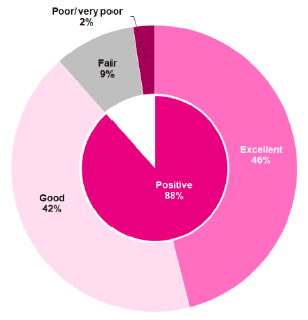
Figure 5.2 : Overall positive rating of hospital and ward environment
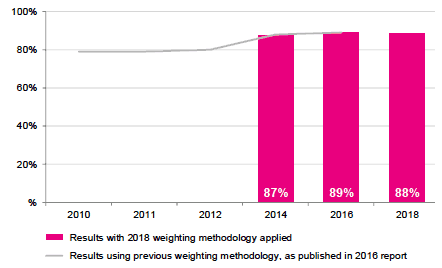
NOTE: Data for the 2010 to 2012 surveys have not been weighted to account for non-response and so are not directly comparable to the 2014 to 2018 surveys.
The Hospital and Ward environment
When asked about particular aspects of the ward and hospital, people were most positive about the cleanliness of the main ward / room (96 per cent positive) and the bathrooms / toilets (93 per cent positive). They were least positive about noise at night from other patients, with 28 per cent saying that they had been bothered by such noise (Figure 5.3).
Figure 5.3 : Summary of responses to hospital and ward environment, 2018
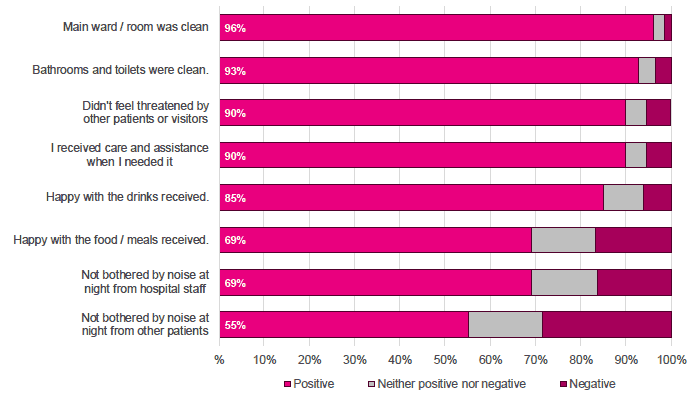
In general responses to these questions were in line with those in the 2016 survey (Figure 5.4). An exception is satisfaction with drinks, which sees a slight, but statistically significant, increase in the percentage of positive responses (now at 85 per cent).
Figure 5.4 : Hospital and ward environment, percent positive trends over time
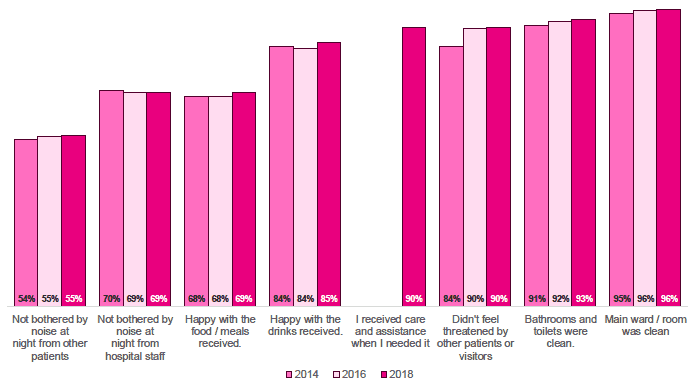
Spending time with people who matter
When asked if they were able to spend time with people who matter, 87 per cent agreed completely that they could. This is an increase of 5 percentage points from 2016 and 8 percentage points from 2014.
Moving wards
Moving wards can be disruptive to patients and can also increase the risk of infections spreading. Effective management of patient flows through hospital is a key priority for NHS Boards to minimise the need for moves.
We asked people to indicate whether they moved wards during their stay and, if so, the time of day. Thirty-nine per cent of people said that they had moved wards at least once during their hospital stay. Of those that moved, over half (58 per cent) were moved during the morning or afternoon and a quarter were moved during the night ( i.e. after 10 pm). See Figure 5.5; note that respondents were able to select more than one response to this question, so the totals do not sum to 100%.
Figure 5.5 : Time of day patients were moved between wards, 2018
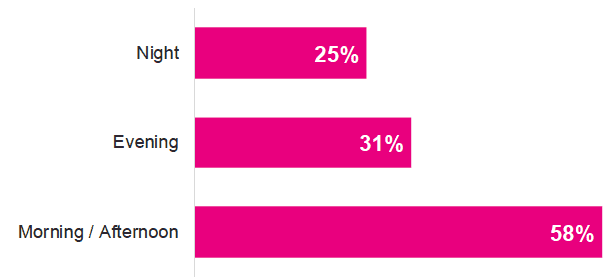
Contact
Email: PatientExperience@gov.scot
There is a problem
Thanks for your feedback